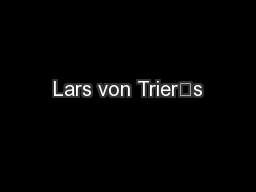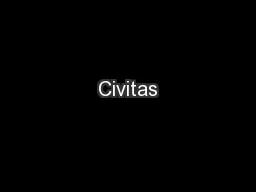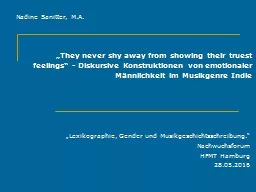PDF-Lars von Trier’s
Author : conchita-marotz | Published Date : 2015-08-01
PARRHESIA BefrielsesbillederImages of a Relief 1982 was the x00660069rst student x00660069lm to gain theatrical release in Denmarkx2019s history and Lars von Trierx2019s x006
Presentation Embed Code
Download Presentation
Download Presentation The PPT/PDF document "Lars von Trier’s" is the property of its rightful owner. Permission is granted to download and print the materials on this website for personal, non-commercial use only, and to display it on your personal computer provided you do not modify the materials and that you retain all copyright notices contained in the materials. By downloading content from our website, you accept the terms of this agreement.
Lars von Trier’s: Transcript
Download Rules Of Document
"Lars von Trier’s"The content belongs to its owner. You may download and print it for personal use, without modification, and keep all copyright notices. By downloading, you agree to these terms.
Related Documents














